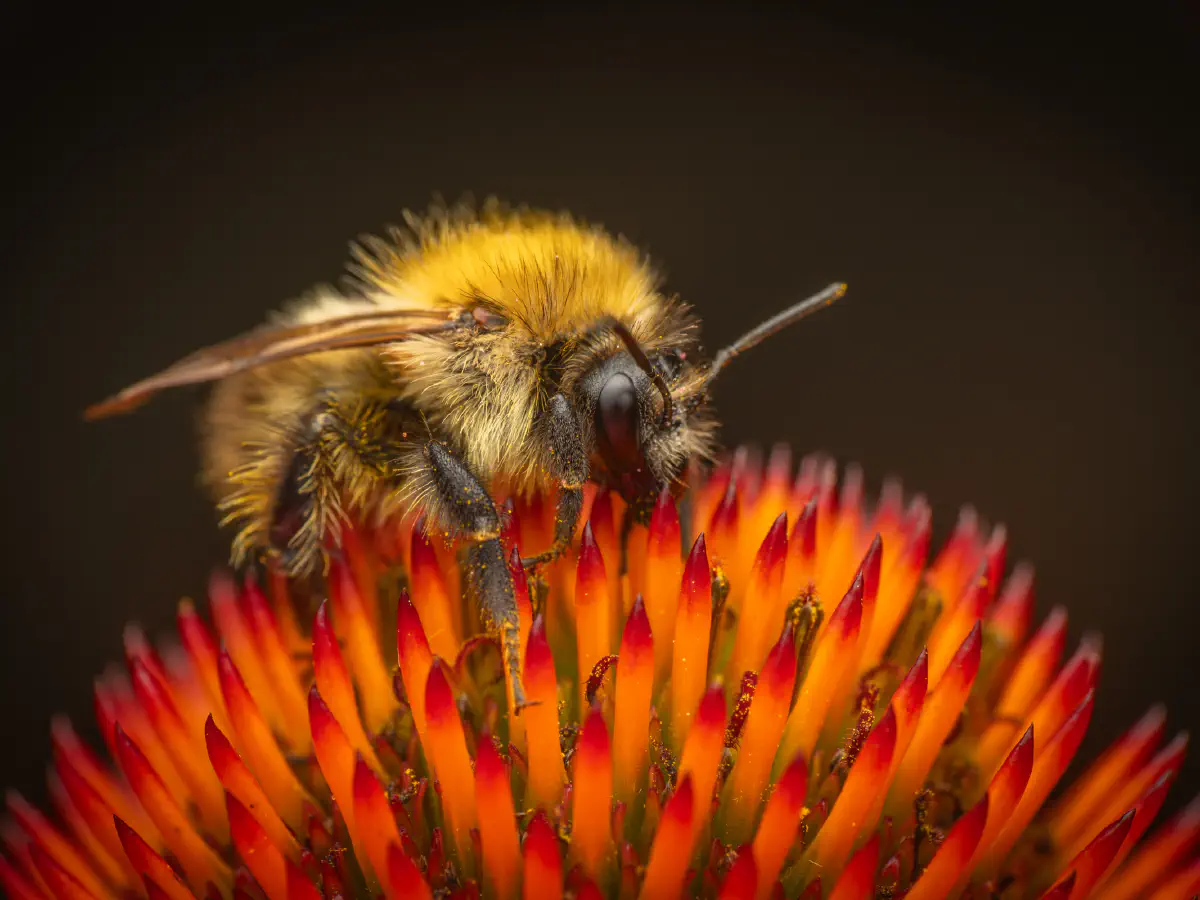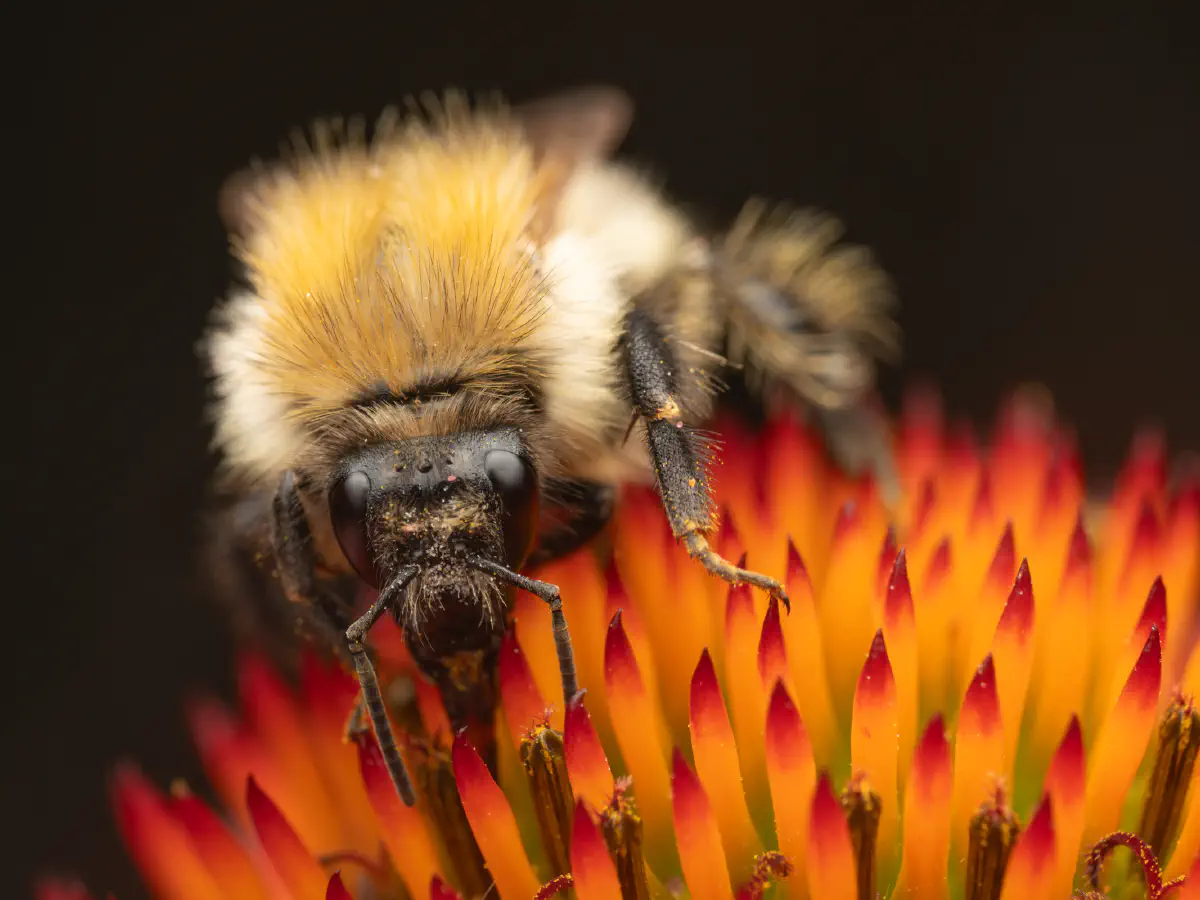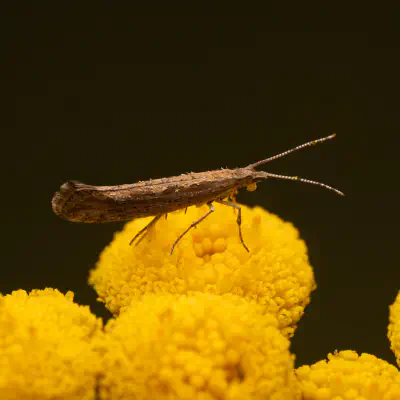The thorax of the common carder bee is either yellowish or reddish-brown in color. The hair of the first four abdominal segments is gray, while the hair of the fifth and sixth terga is yellowish or reddish-brown. The body length of queens ranges from 15 to 18 mm (0.59 to 0.71 in) in length. The body length of female workers ranges from 9 to 15 mm (0.35 to 0.59 in) in length. The body length of
males range from 12 to 14 mm (0.47 to 0.55 in) in length. Queens measure 28 to 32 mm (1.1 to 1.3 in) from wing to wing. Workers measure 24 to 27 mm (0.94 to 1.06 in) from wing to wing. Drones measure 24 to 27 mm (0.94 to 1.06 in) from wing to wing. The head of the common carder bee is of medium length and the snout is long compared to other species of
bumblebee. The snout of the queen ranges between 13 and 15 mm (0.51 and 0.59 in) in length. The snout of workers range from 12 to 13 mm (0.47 to 0.51 in) in length. The snout of drones range from 10 to 11 mm (0.39 to 0.43 in) in length.



